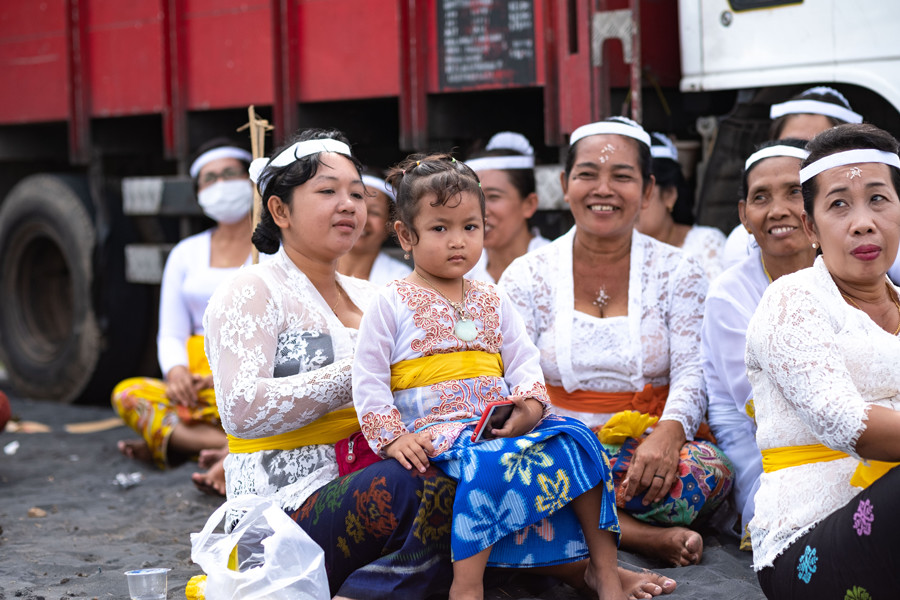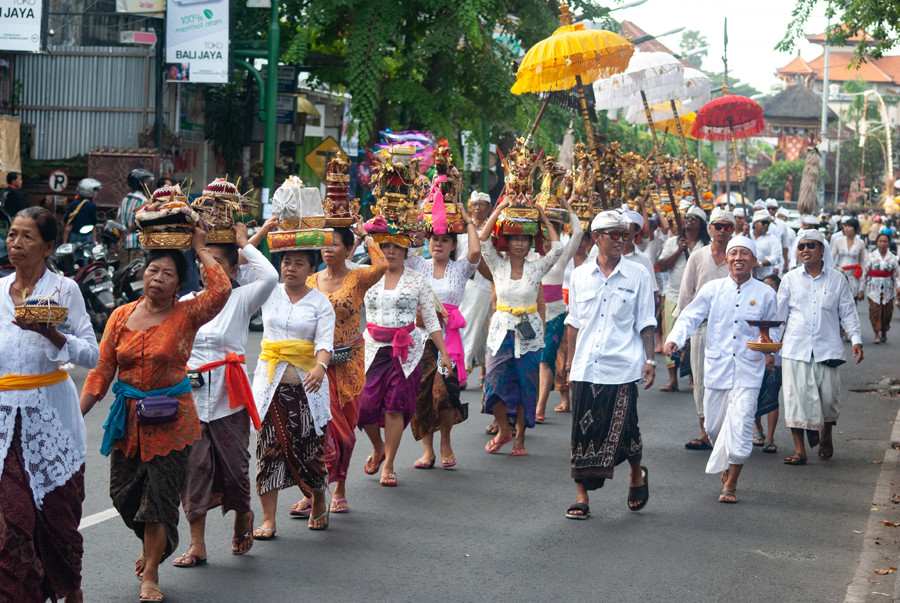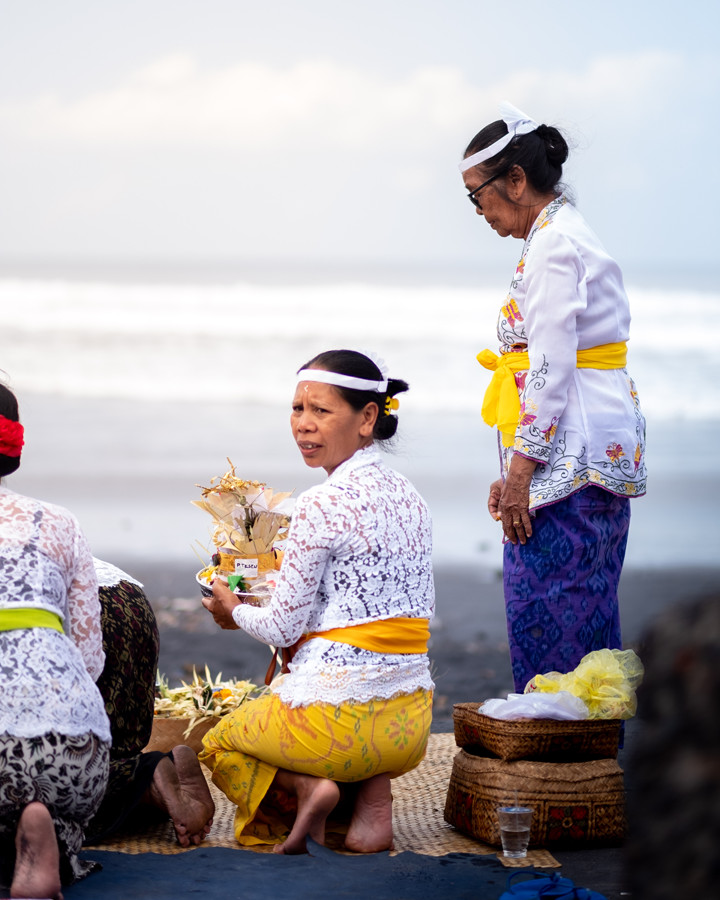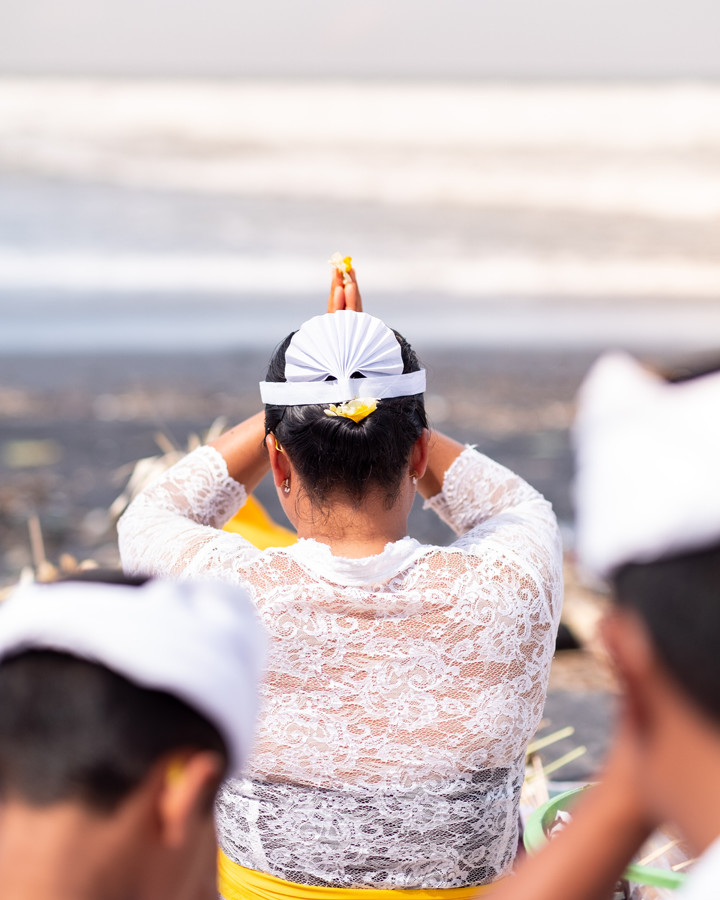Adorned in an elegant lace blouse and batik sarong called kamben, you might notice the Balinese women wearing this attire on their way to the temple for prayers and religious ceremonies. This is the kebaya: the traditional attire of the Balinese women.

The kebaya has been the traditional attire of Balinese women since the Dutch colonisation of Indonesia but before that, the Balinese people did not have traditional clothing. Before the kebaya was introduced, Balinese women would be bare-chested while up and about doing their daily house chores or going to the market, though they would wear more modest attire on temple visits. You might have seen this in old pictures of Bali and you might still come across elderly Balinese women bare-chested on their daily life until today.
The kebaya was first introduced as a way to preserve the Balinese women’s modesty. Even though there are many variations of kebaya throughout the different regions of Indonesia, there are four main items that make up the full Balinese kebaya. These four items are the kebaya itself, a blouse that is typically made using lace material, though it can be made from any sort of materials; the kamben, a type of sarong usually made from woven or batik cloth; and two cummerbunds, which is the sabuk and the selendang.
First, the kamben would be worn around the waist, which will then be tied with the sabuk, a wide sash that is repeatedly wrapped around the torso, between the upper hip and the solar plexus. The kebaya would then be worn loosely over the kamben. The shape of the kebaya consists of tapering in at the waist which spreads out over the hips. Then, the selendang would commonly be worn as a stylish outer cummerbund to cinch the kebaya on the waist.
There are varying colours of kebaya that are suited for different occasions. During religious ceremonies and events that are held at the banjar, the women would typically wear a white kebaya. However, in villages and family houses, Balinese women are much more expressive with their kebaya and would wear colourful or themed kebaya. The banjar also usually provides Balinese women with matching kebaya for village and town events.

In Bali, custom dictates the appropriate technique to wear this traditional attire. This includes the length of the kamben, which is an item also worn by the men. The kamben must be of a certain length almost to the ground, longer than the men’s kamben, and must be tied around the top of the thighs tightly to ensure that the bottom is nicely wrapped. The sleeve length of the kebaya is also crucial, one must follow certain rules to be deemed fashionable. In this case, the sleeve length of the kebaya must pass the wrist bone.
There are also varying styles of the kebaya, such as one that shows the midriff above the selendang, typically worn by the older women, whilst the younger generation typically prefer kebaya that closes at the front. To complete the look, the Balinese women would wear flowers in their hair, most often frangipani, also known as Bunga Jepun or Bunga Kamboja in Bali, which is also used for daily offerings to the gods.









